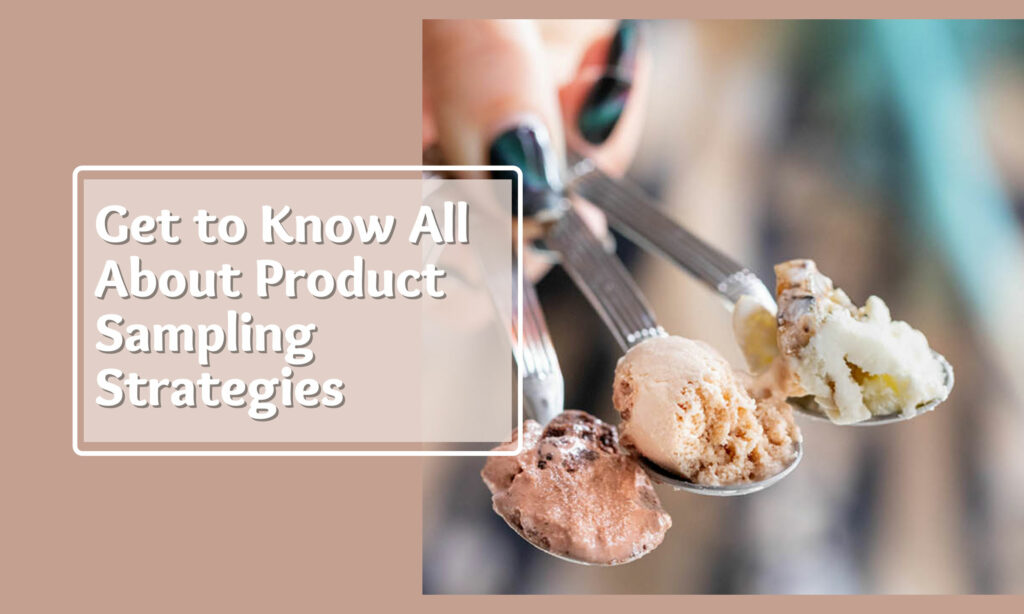Introduction:
In the bustling markets of Canada and the USA, "Demand Generation Strategies for CPG Brands" are pivotal for success. With evolving consumer preferences and fierce competition, ensuring a product stands out has become more challenging than ever. This article offers a comprehensive guide on how CPG brands can effectively generate demand for their new product launches.
1. Understanding Consumer Preferences:
Tastes and Preferences: Consumer preferences are influenced by a myriad of factors, from cultural shifts to technological advancements. Brands must invest in continuous market research, using tools like surveys, focus groups, and social media listening to gauge current preferences and anticipate future trends.
Consumer Expectations: In an age of instant gratification, consumers expect more from brands. They seek transparency, value, and convenience. Brands must manage these expectations, ensuring clear communication about product features, benefits, and availability.
2. Leveraging Consumer Insight Platforms:
Real-time Data Analysis: Consumer Insight Platforms provide real-time data on consumer behavior, preferences, and feedback. This immediate access allows brands to make quick decisions, adapting their strategies based on current market dynamics.
Segmentation and Targeting: These platforms like Peekage enable brands to segment their audience based on various parameters like demographics, buying behavior, and preferences. Such segmentation ensures that marketing efforts are targeted, leading to higher conversion rates.
Predictive Analysis: Advanced algorithms within these platforms can predict future consumer behavior based on historical data. This predictive analysis can be invaluable for brands, allowing them to anticipate market shifts and adjust their strategies accordingly.
Competitor Benchmarking: Consumer Insight Platforms often provide data not just on one's brand but also on competitors. This benchmarking allows brands to understand their market position, identify gaps in their strategy, and learn from competitors' successes and failures.
Enhanced Customer Engagement: These platforms often come with tools that facilitate direct engagement with consumers. Be it surveys, feedback forms, or interactive content, such engagement tools can provide deeper insights while also building stronger brand-consumer relationships.
Innovation and Product Development: Insights derived from these platforms can be pivotal in the product development phase. Understanding what consumers want, what gaps exist in the market, and what trends are emerging can guide the innovation process, ensuring that new products resonate with the target audience.
3. The Art and Science of Pricing:
Price Elasticity: Pricing isn't just about covering costs and ensuring profitability. It's a tool to communicate value. Understanding how price changes affect demand is crucial. While for some products, a price hike might deter customers, for others, it might enhance the perceived value.
Luxury vs. Essentials: Luxury products often operate on different principles. A high price can enhance desirability. On the other hand, essentials, like groceries, often see increased demand with competitive pricing.
4. Crafting a Comprehensive Advertising Strategy:
Blending Digital with Traditional: While digital advertising offers precise targeting, traditional advertising, like TV and radio, offers unparalleled reach. A successful advertising strategy seamlessly blends both, ensuring consistent messaging across platforms.
Influencer Collaborations: In the age of social media, influencers can sway consumer opinions. Collaborating with influencers, especially those aligned with the brand's values, can drive demand and enhance brand credibility.
5. Economic Indicators as Predictors:
Income and Spending Power: Economic conditions, from recessions to booms, directly impact consumer spending power. Brands must be agile, adjusting their strategies based on prevailing economic conditions.
Employment Trends: High employment rates often correlate with increased consumer confidence and spending. Monitoring these trends can offer insights into potential market shifts.
6. Standing Out in a Crowded Market:
Differentiation: In a market flooded with substitutes, differentiation is key. This could be in product features, packaging, or even the brand's sustainability efforts.
Strategic Partnerships: Collaborating with non-competing brands can offer unique marketing opportunities. Think of fitness apps partnering with health food brands or eco-friendly cleaning products collaborating with green energy companies.
7. Navigating External Challenges:
Global Events and Their Impact: Events like the COVID-19 pandemic have shown that external factors can drastically impact demand. Brands must have contingency plans, ensuring they can navigate such challenges without compromising their market position.
Regulatory Changes: Especially relevant for the CPG sector, regulatory changes can impact everything from product formulation to packaging. Staying updated and compliant is not just a legal necessity but also a trust-building measure.
8. Post-Launch Engagement:
Gathering Feedback: The post-launch phase is crucial. Brands must actively seek feedback, using it not just for product improvement but also to engage with consumers and build long-term relationships.
Loyalty Programs: Rewarding consumers for their loyalty not only ensures repeat purchases but also turns consumers into brand advocates. Referral programs, loyalty points, and exclusive previews can enhance post-launch engagement.
Conclusion:
In the competitive landscape of the CPG sector, the right tools and strategies can make all the difference. Consumer Insight Platforms are invaluable assets, providing brands with the data and insights they need to stay ahead of the curve. By understanding consumers, leveraging real-time data, and continuously adapting, brands can ensure that their new product launches not only capture market attention but also achieve sustained success.




